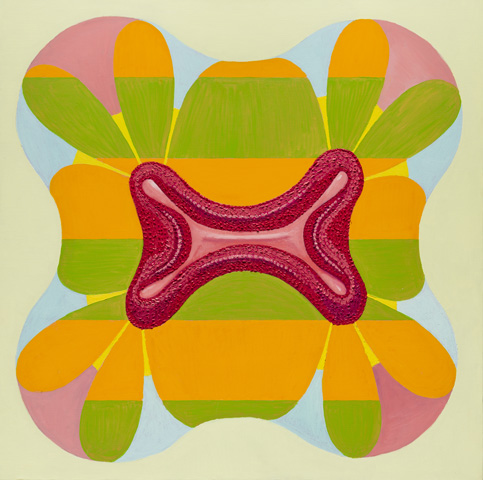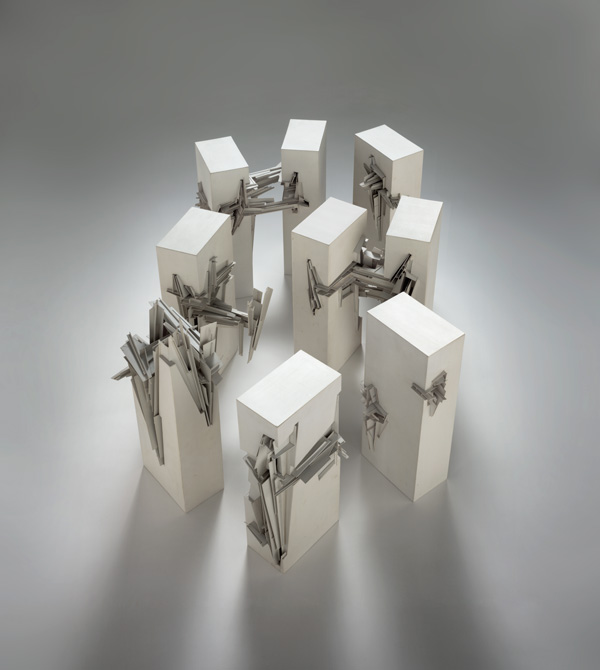|
0 Comments
The disparity between form and content and the relationship between the pots and the images that decorate them is perhaps the most challenging incongruity of Perry's work. Yet, beyond the initial shock of an apparently benign or conservative medium carrying challenging ideas, what keeps us drawn to the work is its variety.
Perry is a great chronicler of contemporary life, drawing us in with wit, affecting sentiment and nostalgia as well as fear and anger. Autobiographical references - to the artist's childhood, his family and his transvestite alter ego Claire - can be read in tandem with debates about décor and decorum and the status of the artist versus that of the artisan, debates which Perry turns on their head. Born in Chelmsford, Essex in 1960, Grayson Perry lives and works in London. Perry was the winner of the 2003 Turner Prize, and has had major solo exhibitions at The British Museum (2011), Musée d'Art Moderne Grand-Duc Jean, Luxembourg (2008), 21st Century Museum of Contemporary Art, Kanazawa, Japan (2007), Andy Warhol Museum, Pittsburgh (2006), Barbican Art Gallery, London (2002) and Stedelijk Museum, Amsterdam (2002). Perry has also curated three exhibitions, most recently the critically acclaimed Tomb of the Unknown Craftsman at the British Museum, London (2011-2012) Unpopular Culture, de la Warr Pavilion (then touring) (2008) and The Charms of Lincolnshire, The Collection, Lincoln (2006). In 2012 Perry created a series of six new tapestries entitled The Vanity of Small Differences; these were initially displayed at Victoria Miro gallery and can currently be seen on a national and international tour led by the Arts Council Collection and British Council. The making of these tapestries was chronicled in a 3-part documentary on Channel 4 exploring taste and class within the UK. All in the Best Possible Taste with Grayson Perry was broadcast in June 2012 and won a BAFTA for Best Specialist Factual Programme in 2013. In June 2013 Perry was awarded a CBE in the Queen's Birthday Honours List - http://www.victoria-miro.com/artists/12-Grayson-Perry/ Charles Jenks:
American author and designer. He studied English Literature at Harvard and Architectural History in London. His book on The Language of Post-Modern Architecture (1977) extended use of the word 'Postmodern' from literary criticism to the visual arts. It opens with the statement: 'Happily, we can date the death of Modern Architecture to a precise moment in time... It expired finally and completely in 1972'. What this means for garden design is shown by the gardens Jencks has made in London and in Dumfriesshire. They are illustrated in his books: Towards a Symbolic Architecture and The Architecture of a Jumping Universe. His is in the great Platonic tradition of the 'imitation of nature' in garden design. But in this context 'imitation' refers to the idea of revealing the principles of nature in the design, not to the making of gardens which 'resemble natural scenery.' - http://en.wikipedia.org/wiki/Charles_Jencks Grayson Perry: Grayson Perry, winner of the 2003 Turner Prize, uses the seductive qualities of ceramics and other art forms to make stealthy comments about societal injustices and hypocrisies, and to explore a variety of historical and contemporary themes. The beauty of his work is what draws us close. Covered with scraffito drawings, handwritten and stencilled texts, photographic transfers and rich glazes, Perry's detailed pots are deeply alluring. Only when we are up close do we start to absorb narratives that might allude to dark subjects such as environmental disaster or child abuse, and even then the narrative flow can be hard to discern. - http://www.victoria-miro.com/artists/12-Grayson-Perry/ Sam Jacob: Sam Jacob is a founding director of FAT, architect, writer and critic. He has most recently been the partner in charge of the Hoogvliet Heerlijkheid project in Holland a park, cultural centre and community facilities completed in October '08 and developed in collaboration with WiMBY! The project explores ideas of Pop, populism and participation which form the basis of an architectural approach intended to explore the role of architecture as communicative device, programmatic agglomeration and social condenser. The project was shortlisted for a World Architecture Award. Jacob has taught and lectured at universities in Europe and the US including Yale and the Architectural Association. He is currently Professor of Architecture at Uiniversity of Illinois, Chicago and Director of Night School at the AA Jacob is a frequent contributor to public architectural debate through regular lectures and symposia. He writes Strangeharvest.com and is architecture editor of Contemporary, a columnist for the Architects Journal, and contributes to magazines and journals including Icon, Art Review, Frieze, Metropolis and Log. - http://www.fashionarchitecturetaste.com/people.html Glenn Adamson: Adamson is among the most prominent and respected voices in the field of applied arts and design today. He currently leads the V&A’s Research Department, a unique cross-disciplinary department that oversees, assesses, and supports the development of museum projects, and fosters research excellence across all the museum’s activities. As Head of Research, he helps to initiate and shape major exhibitions, manages partnerships with museums and universities, and leads academic fundraising. Adamson also contributes to the V&A’s publications, educational programming, media relations, and commercial activities. - http://madmuseum.org/press/releases/glenn-adamson-appointed-director-museum-arts-and-design Il Miglior Fabbro: In Remembrance of Italo Scanga: Michigan State University Distinguished Alumni9/18/2014 Italo Scanga, a world-renowned artist and art professor in the Visual Arts Department died July 27, 2001 in his Pacific Beach studio of heart failure. He was 69 years old.
Scanga, a native of Calabria, Italy, was celebrated throughout the art world for his ebullient constructions and his fluency across the spectrum of art media. His creations in sculpture, painting, printmaking, glass and ceramics are in numerous museum collections, including The Art Institute of Chicago, the Metropolitan Museum of Art in New York, and the Los Angeles County Museum of Art. His major solo exhibitions have appeared in museums and galleries around the world, including the Museum of Fine Art in Boston and the Museo Rufino Tamayo in Mexico City. A member of the UCSD Visual Arts Department since 1978, Scanga sustained an extraordinary level of achievement as an artist who exhibited widely, as a teacher and mentor, and as a community visionary. His former students include such artists as Bruce Naumann, Dan Faham, and Iza Lou. Scanga received his BA and MFA in sculpture at Michigan State University. He taught at the University of Wisconsin, Rhode Island School of Design, Penn State, and the Tyler School of Art before a stint as a visiting professor at UCSD in 1976-77 led to a permanent faculty post. Born in Lansing, Michigan, Lebbeus Woods (1940–2012) dedicated his career to probing architecture’s potential to transform the individual and the collective. Woods, who sadly passed away as planning for this exhibition was underway, had an enormous influence on the field of architecture over the past three decades, despite the few built structures to his name. Working deftly with pencil on paper and on intricate models with collaborators, he created complex worlds—at times abstract and at times explicit—that present shifts, cycles, and transience within the built environment.
Lebbeus Woods, Architect brings together significant projects from the past thirty years. Woods’s architecture is emblematic of a period of exploration and theory that emerged in the field in the 1980s. As someone attuned to the human condition, he was more concerned with architecture’s ability to inspire and change our collective understanding of what is possible than with the formal arguments of architectural practice. His prescient proposals offer new architectural typologies and anticipate the need for spaces of uncensored communication, particularly in the face of changing political landscapes and natural calamity. Some structures suggest a disparate alternative, while others acknowledge existing circumstances rather than erase them; they drift above, embed within, or occupy the underground. The architecture on view here, presented through extensive drawings and models, offers an original perspective on humanity’s ability to resist, respond to, and create in adverse conditions. He once said, “Maybe I can show what could happen if we lived by a different set of rules.” This exhibition marks the first presentation of an architect’s work at the Broad MSU. Zaha Hadid, the architect who designed this museum, was a longtime friend and colleague of Lebbeus Woods. Each architect contributed tremendously towards a burgeoning experimental architecture discourse, and Hadid has spoken publicly of Woods’s impact and influence on her practice. Lebbeus Woods, Architectoffers visitors further insight into the context and significance of this building by bringing it into dialogue with Woods’s provocative ethos and transformative designs, which find formal and conceptual echoes in the structure and spaces of these galleries. http://broadmuseum.msu.edu/exhibitions/lebbeus-woods-architect |



